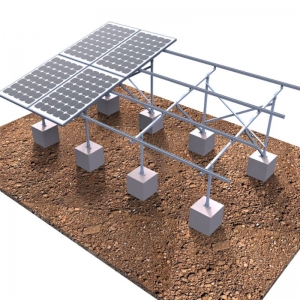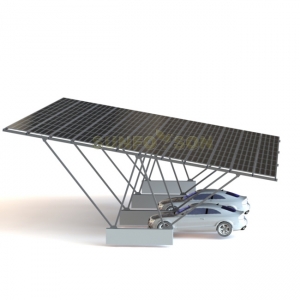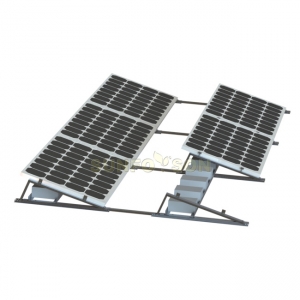In 2017, European solar energy showed signs of recovery. Some countries have announced significant growth figures, and some new markets are beginning to realize the possibility of photovoltaics. This article summarizes the latest developments in photovoltaics in continental Europe.
According to IHS Markit's data, in Europe, the newly installed capacity of solar energy in Europe was 8.61 GW in 2017, a year-on-year increase of 28%, reaching the highest level in five years.
Turkey took the lead and installed capacity in 2017 was 1.79 GW, an increase of 213%. Germany installed 1.75 GW, an increase of 23%. The third-ranked United Kingdom, with further weakening of government support, was only 912 MW, down 54% year-on-year. The Netherlands began to establish its dominance in Europe. Central European countries including Poland and Hungary also began to take action, and Spain also recovered from the gloomy 2016. The new installation in 2017 will be 135 MW.
With the progress of 2018, Europe seems to have recovered: auctions are taking place across the European continent, and German and Italian residential and commercial sectors have seen a strong rebound in demand for rooftop solar. IHS Markit analyst VonAichberger predicted that demand in Europe will increase significantly in 2018, saying that “Europe will win global market share by 2020 but will not return to an important position before 2014.”
Turkey: Integration in progress
After the boom is integration. Turkey's installation of 1.79 GW in 2017 was shocking to many people. However, depending on this year, it is unlikely to continue. The market outlook for 2018 is still relatively low, with an estimated installed capacity of 700-800 megawatts.
Some manufacturers, suppliers, contractors and subcontractors may withdraw from the market by the end of this year. Only some larger, more mature group companies can survive.
The prospects for the development of large projects will depend on the choice of the Turkish government. Whether the government will choose to further carry out "super project bidding" still has some disputes.
For solar energy suppliers, contractors and EPCs in Turkey, this will be a difficult time for a downturn in the market, but there will be opportunities in the surrounding areas. Altay Coşkunoğlu, chairman of the Tekno Group, said that Turkish companies are very flexible in their rapid change of direction. Most of them, like some international companies, are very dynamic.
Germany: Getting back on track
The mainstream mood of the German market is positive. Last year's growth has picked up again, but the 1.75 GW figure is still below the politically expected expansion target. The German Solar Energy Industry Association (BSW Solar) believes that Germany will once again reach the benchmark of 2.5 GW this year. The first-quarter data gave people hope - 580 MW of new capacity, up 65% year-on-year. It is expected that it will be slightly below 2.2 GW in 2019.
According to Carsten Körnig, CEO of BSW Solar, in addition to lower prices, a stable policy environment has renewed the confidence of traders and project planners, which is the root cause of the German market recovery. In addition, the German government promised to allocate 2 GW of photovoltaic power generation contracts in 2019 and 2020. At present, the amount of tenders for 750 kW and above systems is 600 MW per year.
At the same time, EUPD research analysts said that the outlook for small and C&I roof installation systems remains "very positive." Susannevon Aichberger of IHS Markit also believes this market segment is an important market driver. In contrast, she saw the uncertainty of the market development of the special 2 GW tender project announced.
France: Leading position appears faintly
In France, grid-connected PV reached 875 MW in 2017, an increase of 50% from 2016. Since 2015, the country has launched a 5 GW ultra solar project bidding project between 2017 and 2020.
In addition, since 2017, small-scale systems including self-contained photovoltaic arrays have had a FIT program, which has brought about a lot of growth. In 2016, there were 15,000 new self-consumption PV arrays connected to the grid.
The French government increased its extra capacity by 1 GW at the end of 2017. A "solar energy working group" was also convened and will meet from May to June to find solutions for simplifying administrative procedures and increasing the pace of PV development.
Xavier Daval, president of French Solar Energy Association SER-SOLER, stated that by 2023 the French photovoltaic market will reach a scale of 3 GW per year.
Austria: Ambitious
The Austrian government has successfully restored its confidence. Vera Liebl of the Austrian Photovoltaic Association (PVA) stated that by 2030, Austria’s electricity consumption will be 100% from renewable sources, mainly hydropower, photovoltaics and wind energy. PVA expects the country's new installation capacity to be 170 MW in 2017, which will reach 300 MW this year. In 2019 it will increase further to 350 MW.
However, EUPD research analyst Ammon is not too optimistic to predict this year's figure should be 220 MW, although he saw a "positive trend."
This year's strong market development is partly attributable to additional incentive
For example, the government will allocate 15 million euros in the next two years to promote photovoltaic systems and electricity storage. On the other hand, solar subsidy for rooftop systems has also been revised, and the share of self-consumption is largely taken into account, which means that more facilities can benefit from incentives.
According to PVA's calculations, the achievement of the 2030 target will require an additional 15 GW of PV. The current installed capacity is about 1.5 GW, which means huge market potential in the next few years.
Switzerland: Solid prospects
The Swiss Solarar expects that the country's capacity will remain below 264 MW in 2017 - this is the country's 2016 figures. EUP also expects a slight decrease in 2017, while HISMarkit believes it will be the same as 2016. Swissolar CEO David Stickelberger said that Switzerland's growth this year is expected to reach about 300 MW, and IHS Markit even predicts that this year's growth will be slightly lower than 340 MW, 2019 will reach 380 MW. It will reach 400 megawatts by 2020.
Switzerland is currently introducing a self-consumption policy. IHSMarkit analyst Susannevon Aichberger emphasized that even without a one-off subsidy, photovoltaic self-consumption can often be profitable.
Stickelberger also believes that power flow is an important driver of the Swiss photovoltaic market.
Greece: Solar return
Greece is preparing to bid for 300MW of new photovoltaic and wind energy projects to be held on July 2nd, and bidding for PV capacity will be even more between 2019 and 2020. In 2018-2019, Greece is expected to increase 800 megawatts of solar photovoltaic and wind power projects through joint auctions.
According to the latest statistics from Lagie, the Greek electricity market operator, Greece currently has a cumulative installed capacity of 2,094 megawatts of large-scale ground projects and 351 megawatts of rooftop photovoltaics. Most of the installation time is between 2012 and 2013. In the net metering plan of December 2014, only 16 megawatt generator sets were installed.
At present, all eyes are on the upcoming auction. Successful bidders will be able to participate in the energy market and will receive a floating premium. The premium will depend on market variables (for example, the marginal price of the system) and the electricity price set through the tender. This policy eventually brought about competition in the Greek renewable energy market. But this requires more participants. It is expected that the July bid will need to attract at least 75% of the volume of the tender.
Stelios Psomas, a policy advisor to the HelaPo, believes that due to too few mature projects in the tendering process, the bids and bids set up seem unreasonable.
Poland: Slowly Escape Coal
Although the current installed capacity of solar energy is only about 280 megawatts, Poland expects to auction about 750 megawatts of photovoltaic power this year, which can further help the most polluted countries in Europe reach a more reasonable level of renewable energy deployment.
The 2018 auction may be a project of no more than 1 MW. Large projects should have better opportunities in another auction of 180 MW hybrid electric power plants. However, wind energy is very likely to be allocated to 1 GW capacity.
PVPoland said that in the past few years, solar energy systems under 40 kW and below under the net metering scheme have greatly promoted the development of photovoltaics. By 2020, the photovoltaic power generation in Poland will likely rise to 1 kilogram. watt.
















